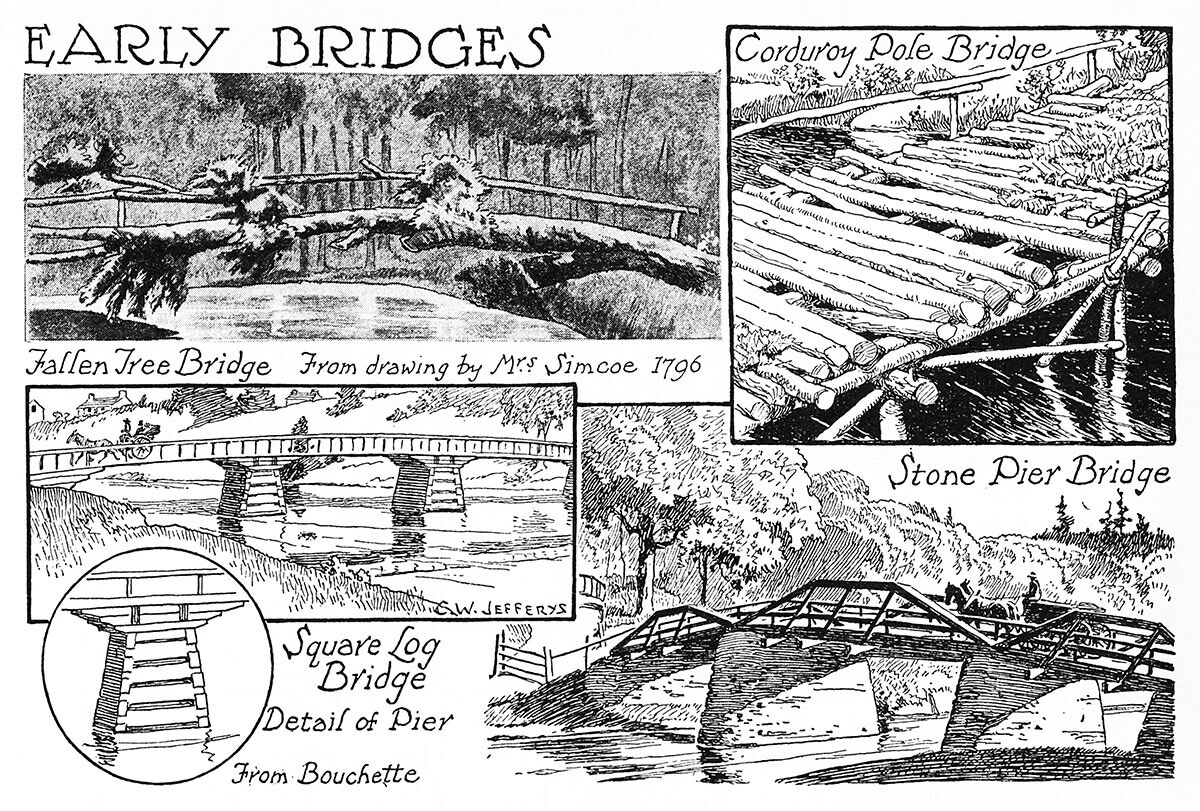Early Bridges
Library and Archives Canada, Acc. No. 1972-26-154
Remarks
C.W. Jefferys' notes about this picture from The Picture Gallery of Canadian History Volume 2
In the early days of Canadian settlement the larger rivers were crossed by ferries. Generally it was not until population centred in villages and towns that bridges of any size or solidity were constructed.
The smaller streams, where they were shallow enough, were crossed by fording. Where gullies interposed or the creeks were too deep, fallen trees were used as foot bridges. Mrs. Simcoe's drawing shows Playter's bridge over the Don near Castle Frank. In her Diary she speaks of it thus: "It is a butternut tree fallen across the river, the branches still growing full leaf. Mrs. Playter, being timorous, a pole was fastened through the branches to hold by. Having attempted to pass it, I was determined to proceed, but was frightened before I got half way."
As the forest trails grew into rough roads, wider bridges were built of poles or saplings laid crosswise, corduroy fashion, on tree trunks supported by posts driven into the bed of the stream. Sometimes these pole bridges were covered with evergreen brush, sods and earth; but they were always insecure and often dangerous. The poles rotted, or broke, leaving gaps and holes which threatened man and horse with lame or broken legs. Spring freshets washed off the poles and earth, and often swept away the bridge entirely.
More substantial bridges were built of planks resting on piers of squared hewn logs dovetailed at the corners, as in log house construction, built high and stout to resist the drive and pressure of flood-borne ice. The illustration is from a drawing made by Bouchette about 1830 of a bridge over the river at St. Hyacinthe.
Of later construction were bridges of wooden beams and planks supported by stone piers. In the specimen illustrated, the bridge consists of three sections, the approaches inclining upward to a middle span. The piers, of fiat stones from the river bed, were built high and strong enough to be beyond the reach of the freshets which often flooded the fiats of the wide river valley, and to withstand the impact of the ice in the spring break-up.
The now almost extinct covered bridge is shown on page 212.
Published References
- Jefferys, Charles W. 1945 The Picture Gallery of Canadian History Volume 2, p.211




Comments